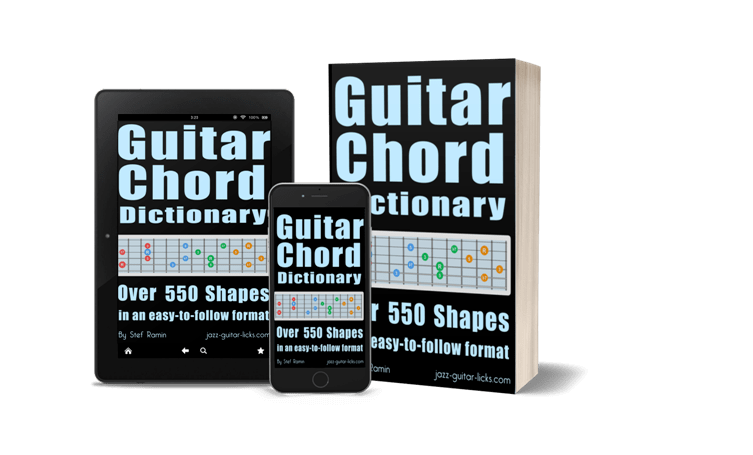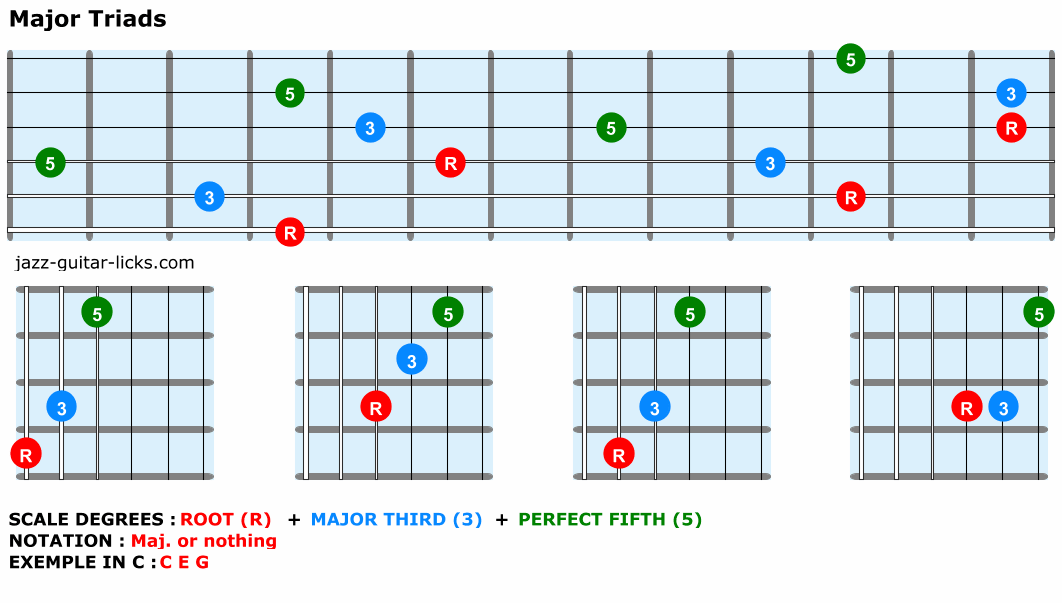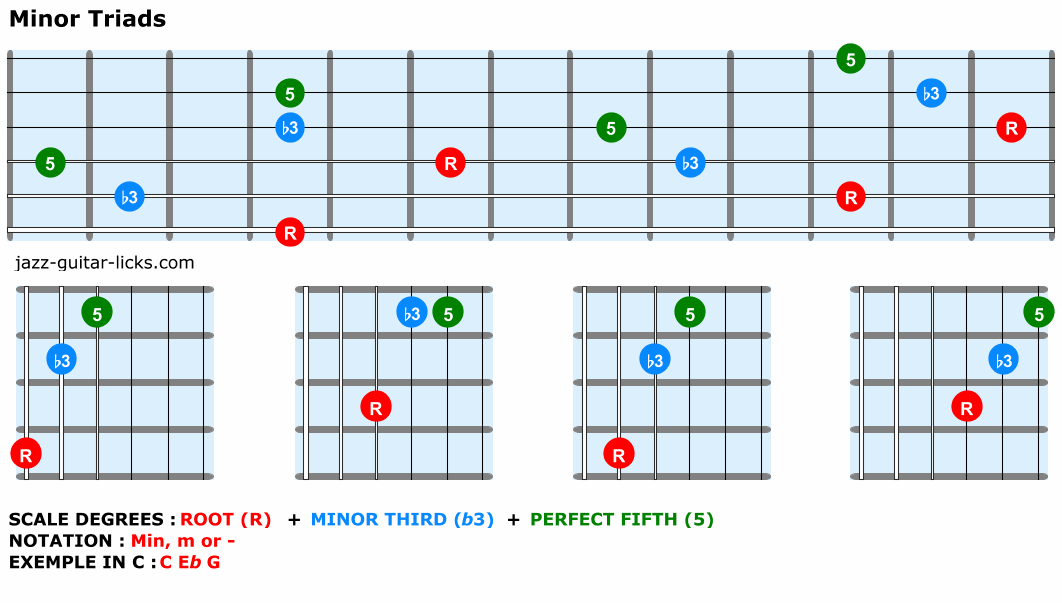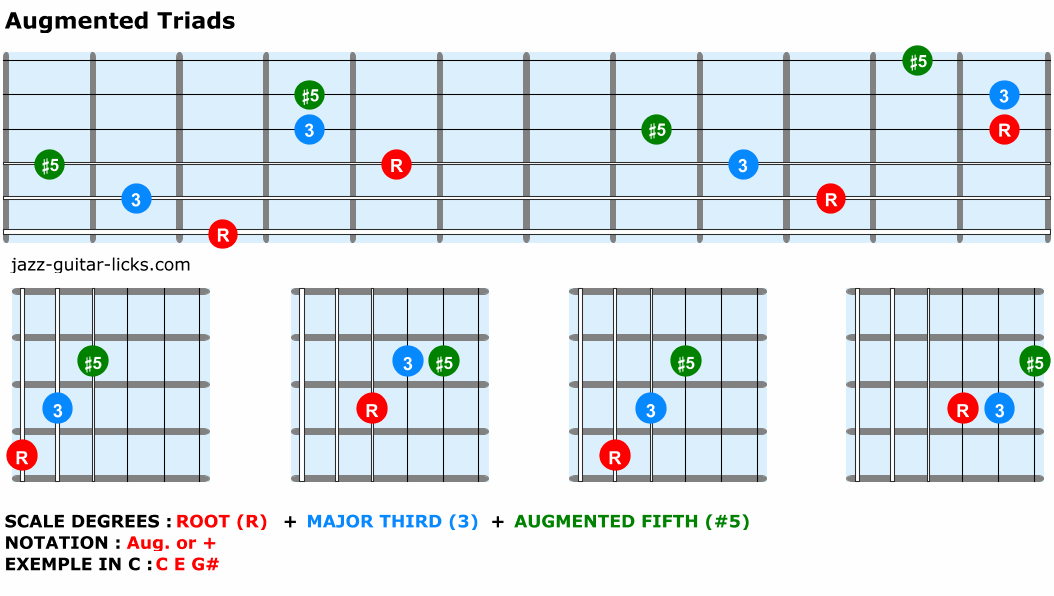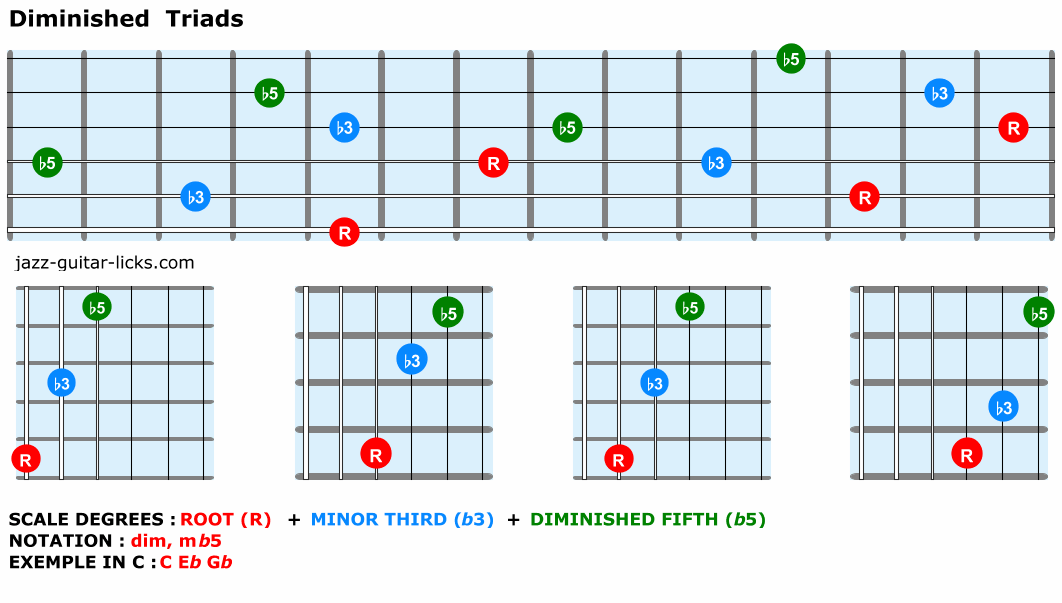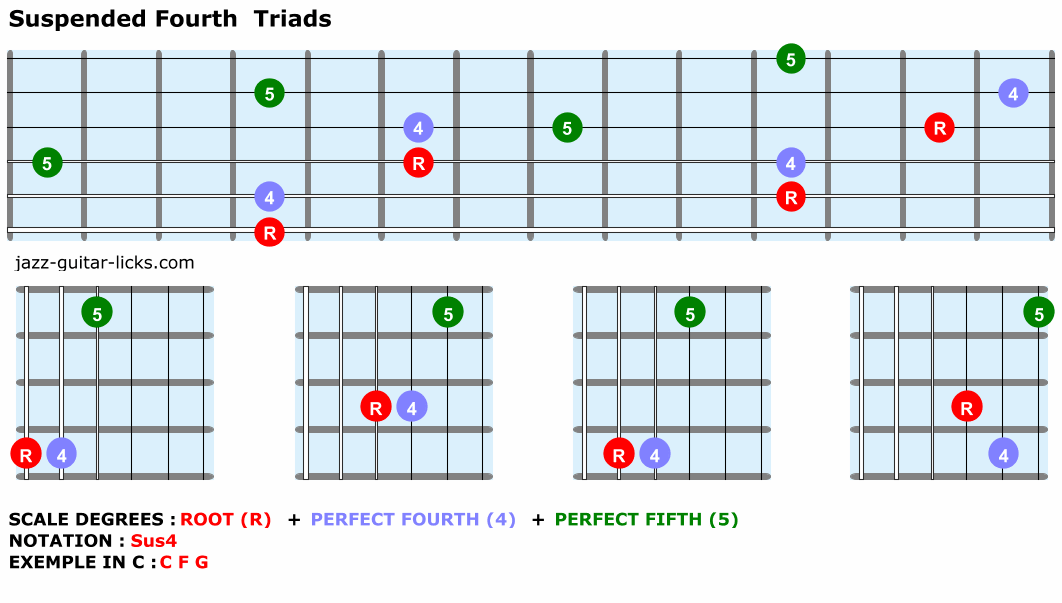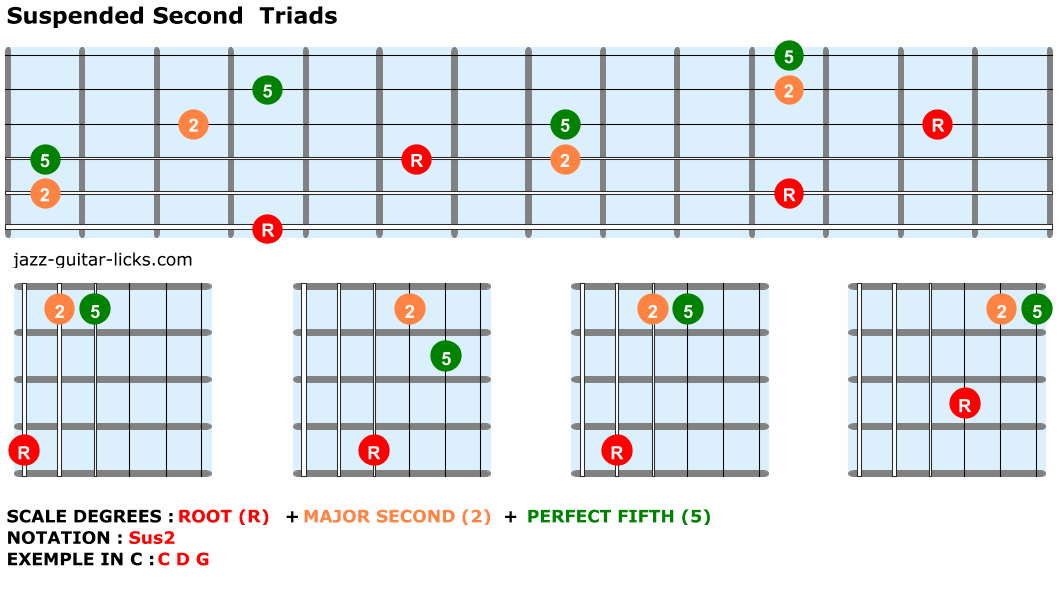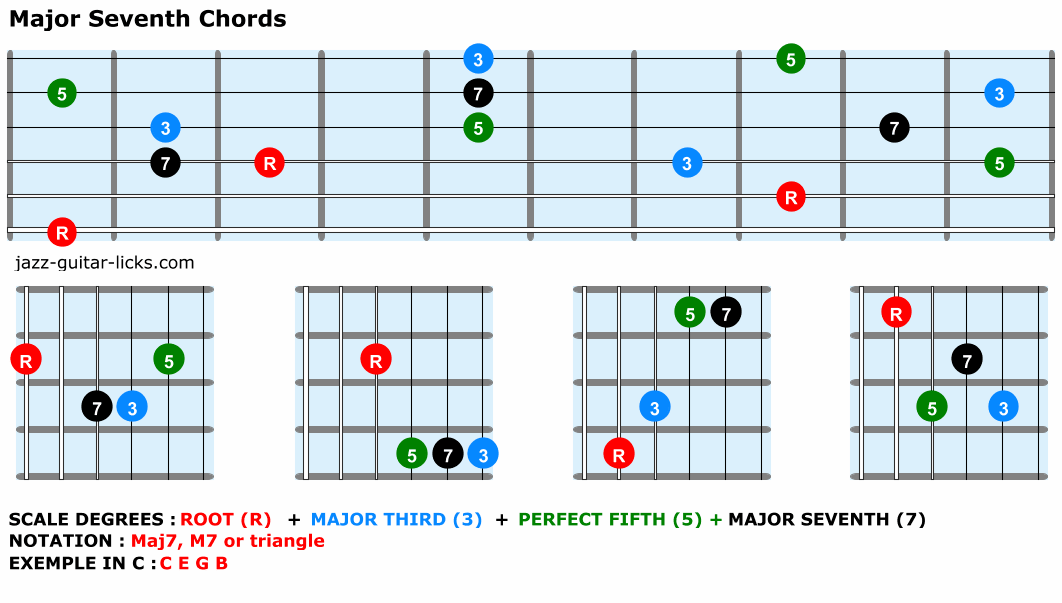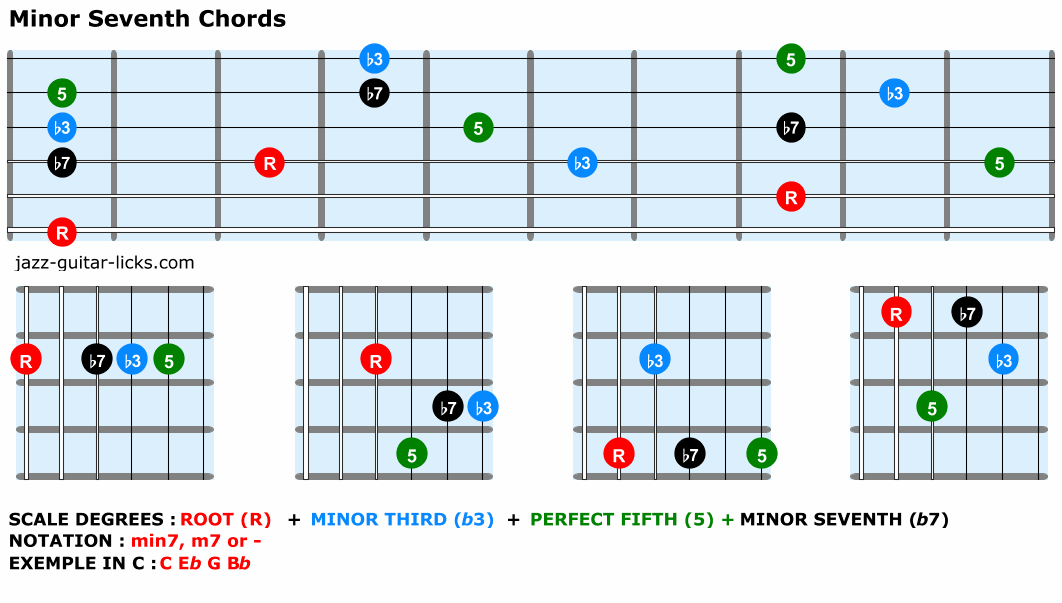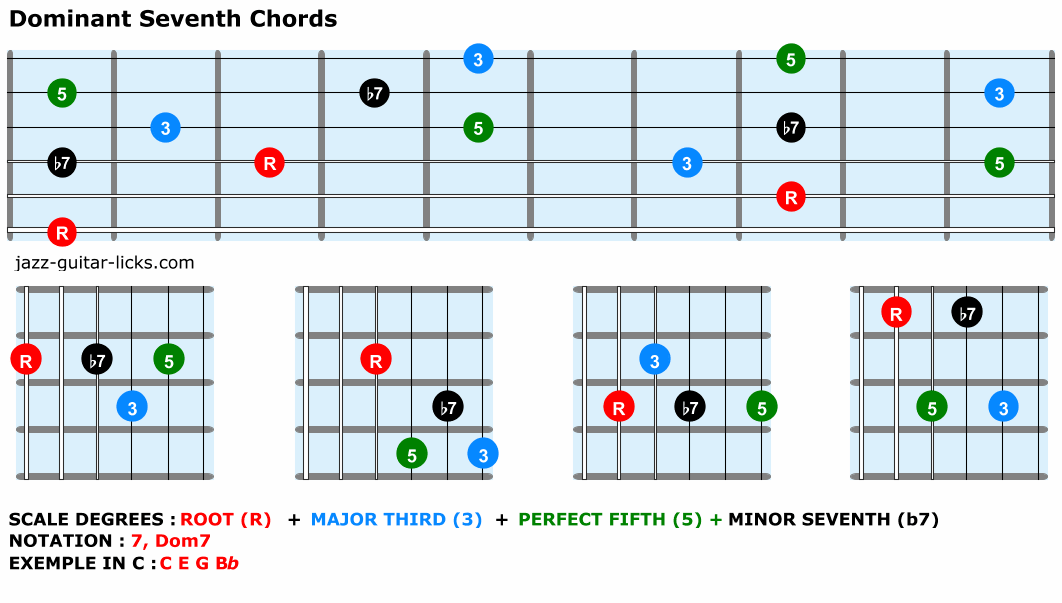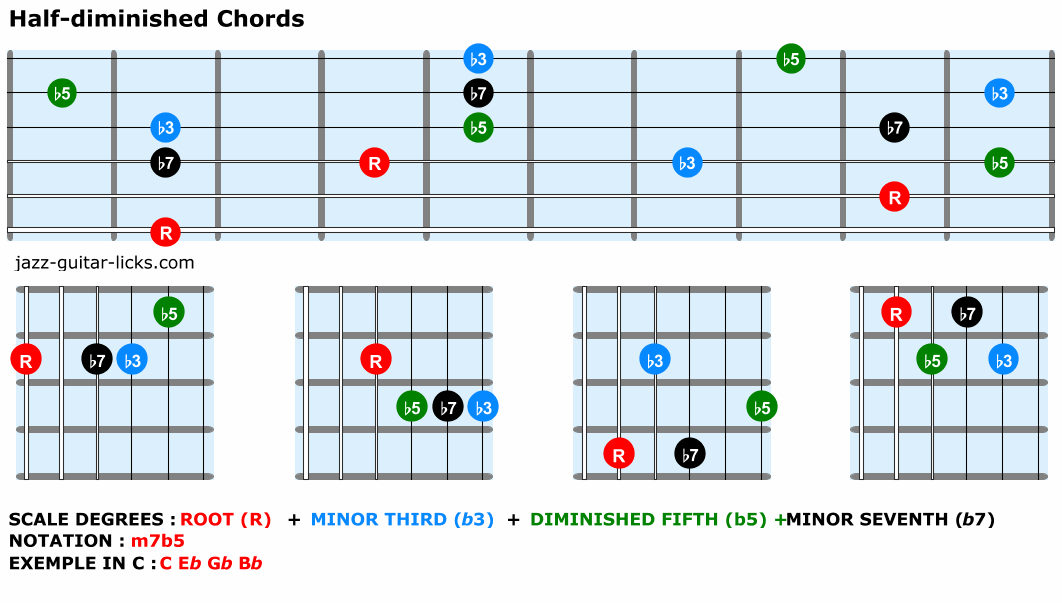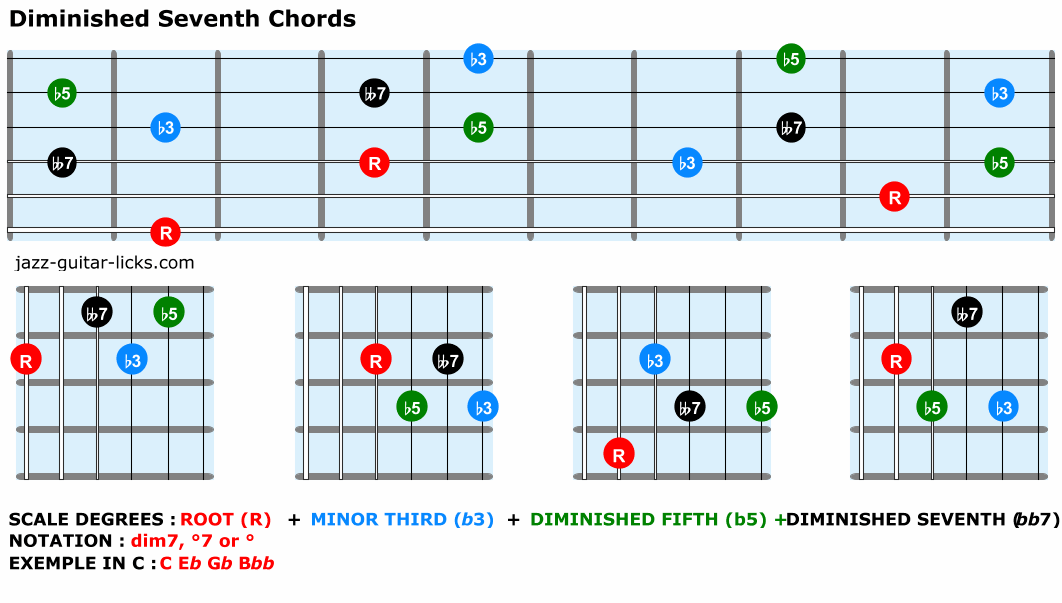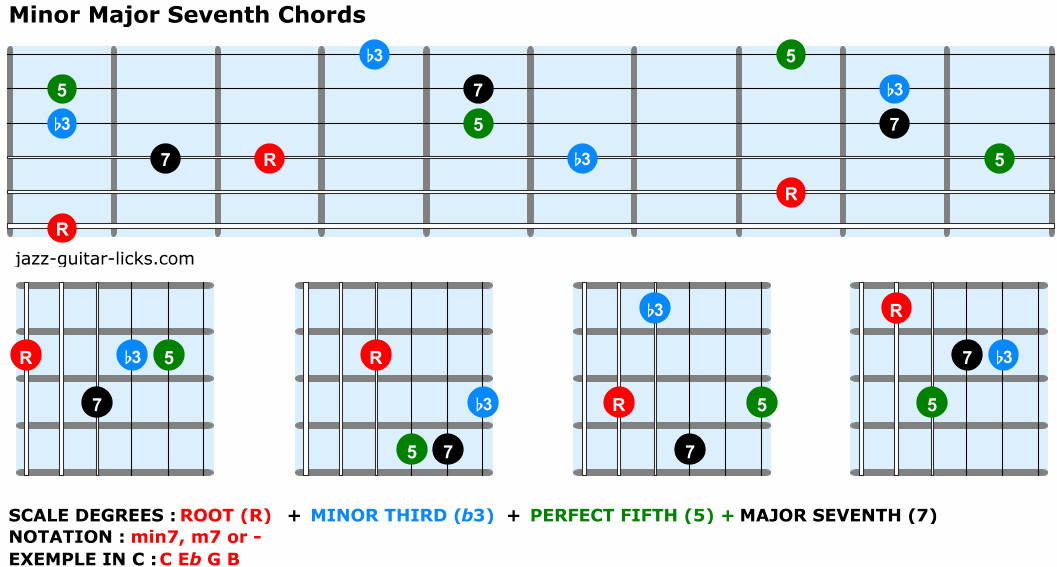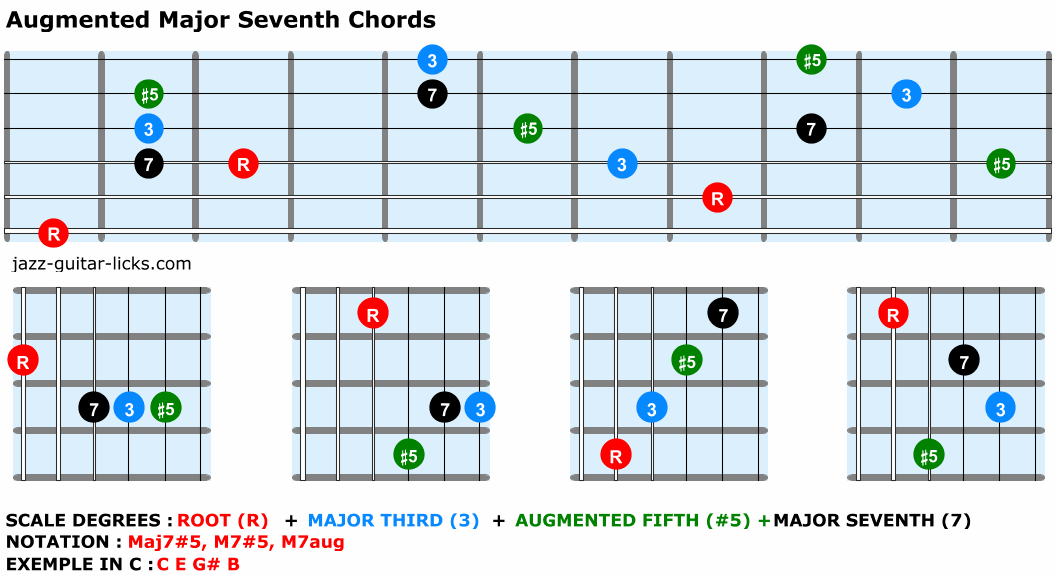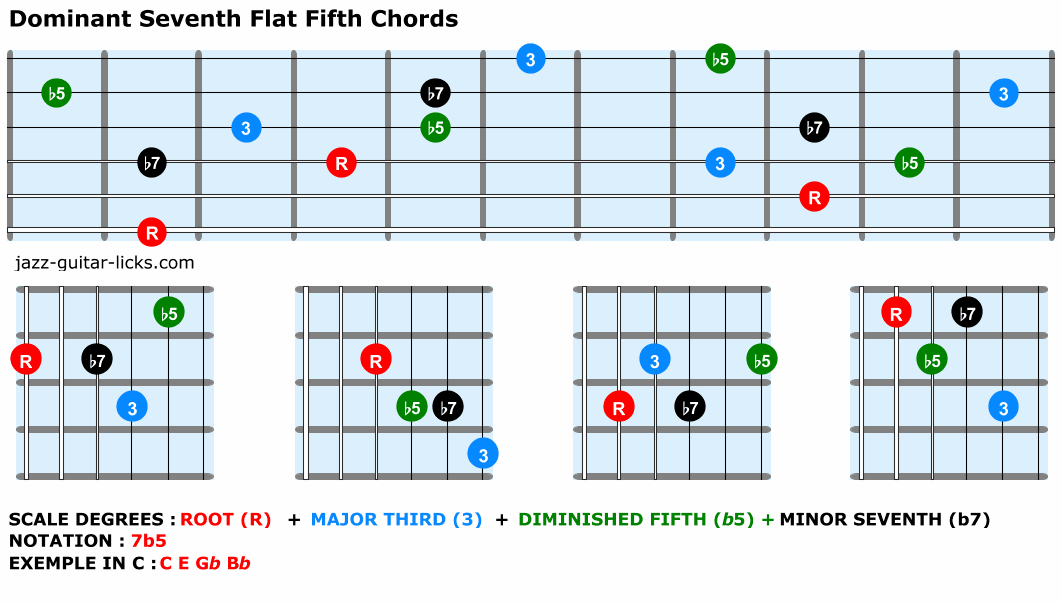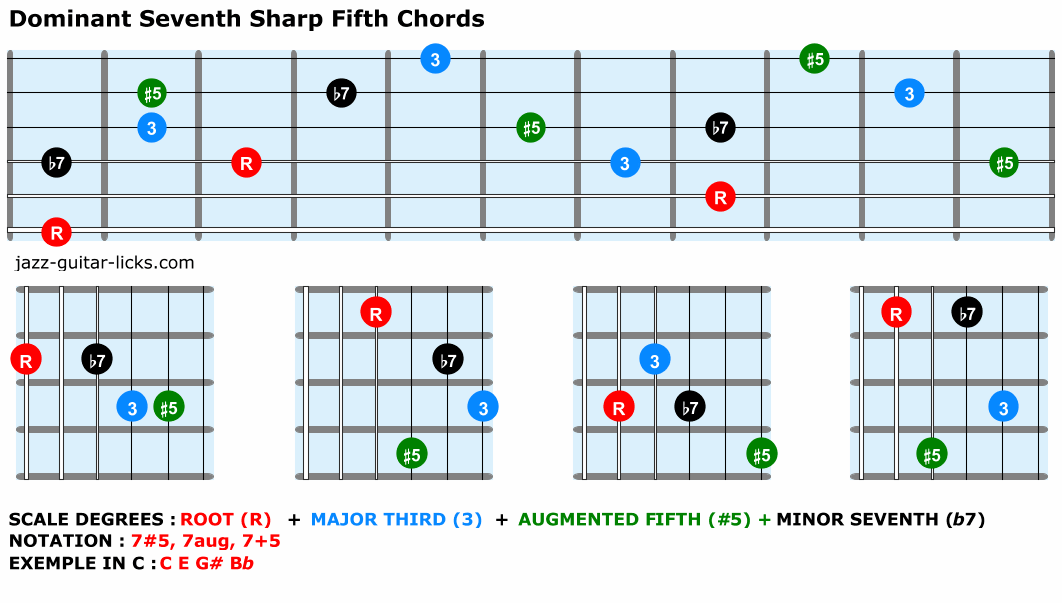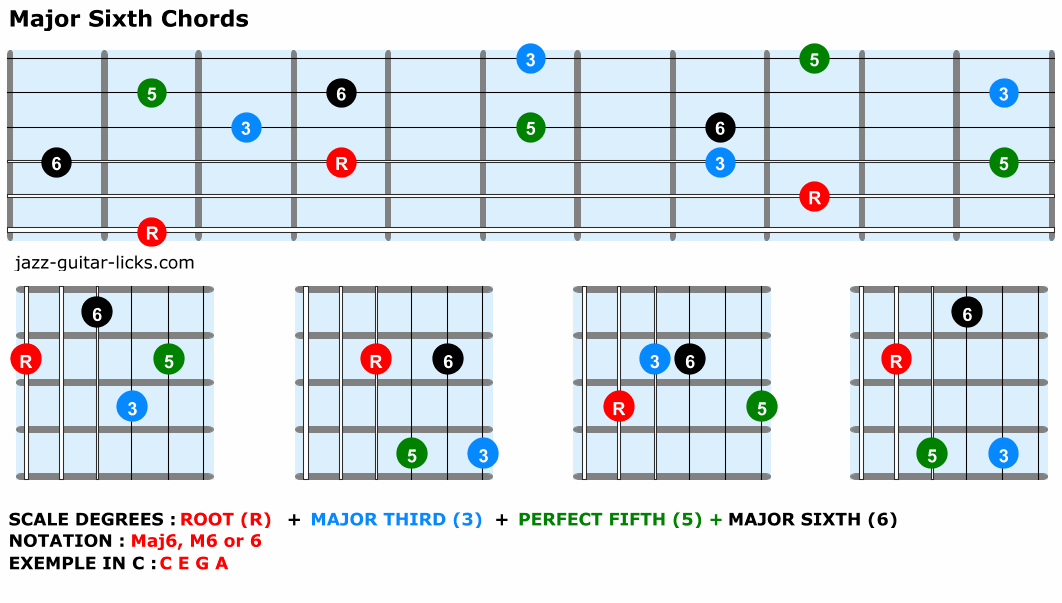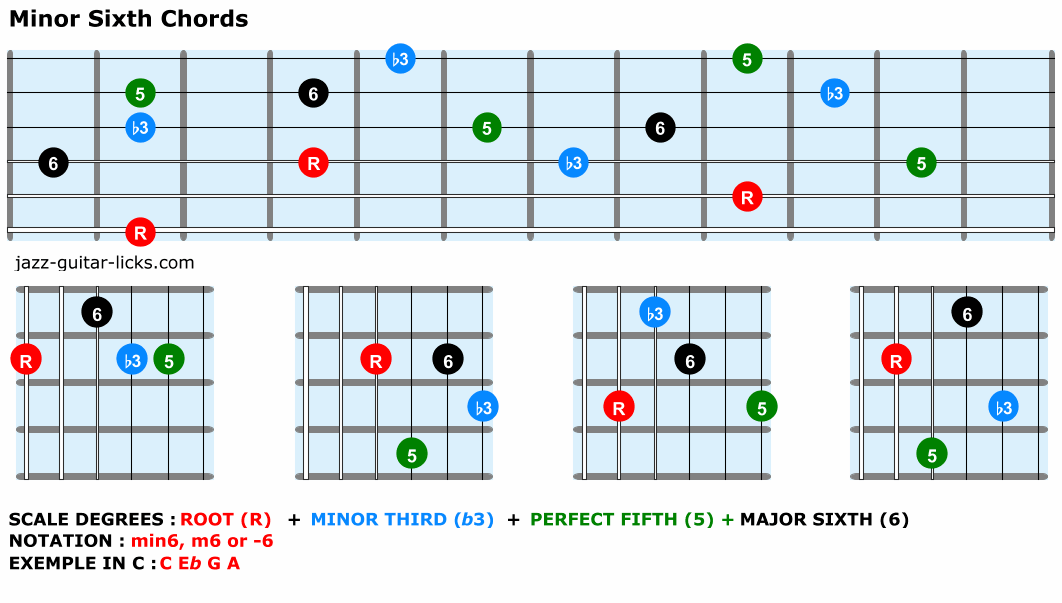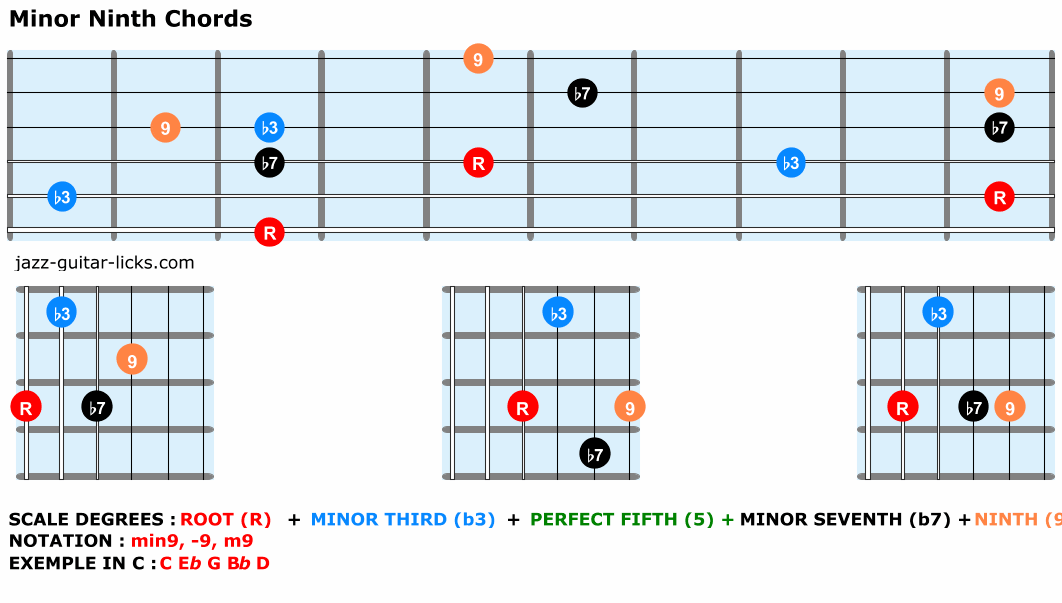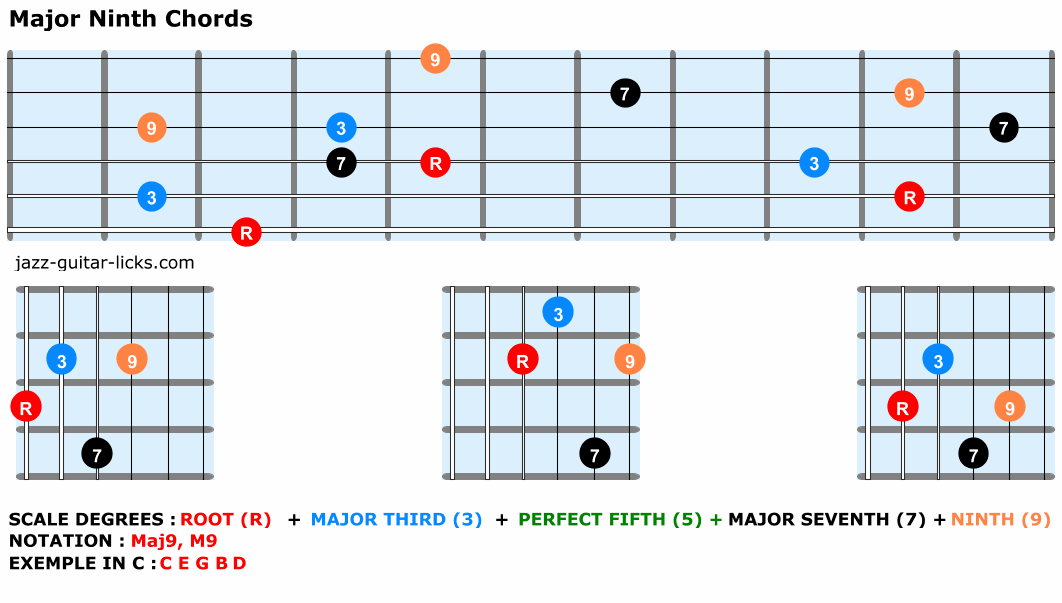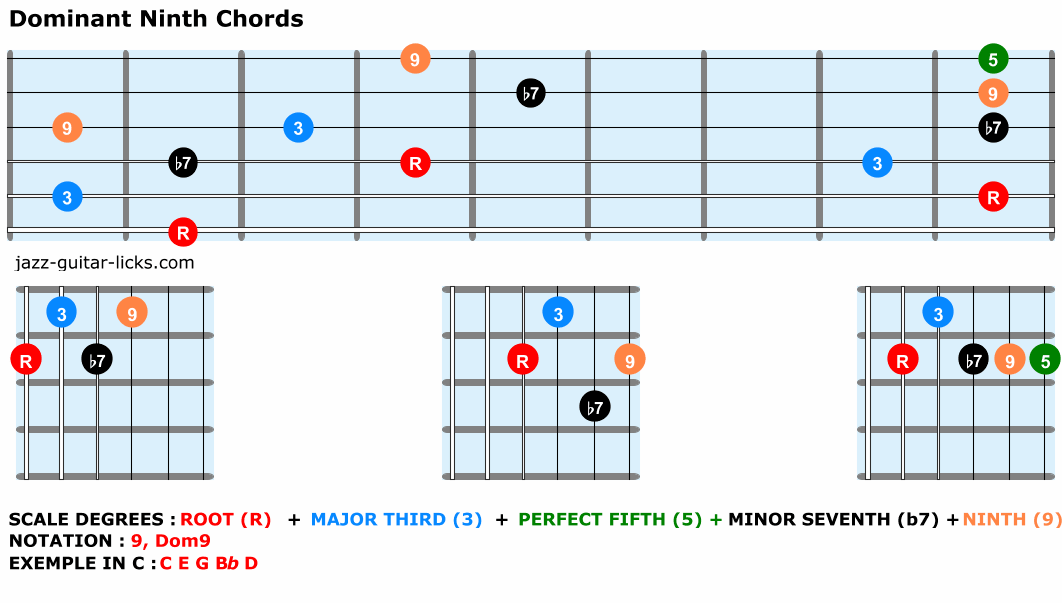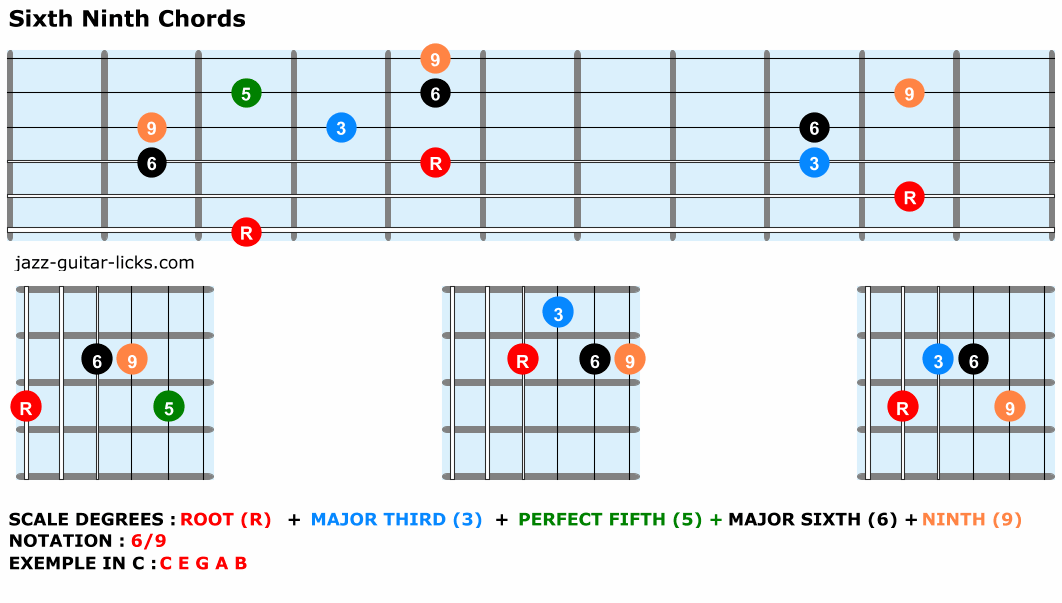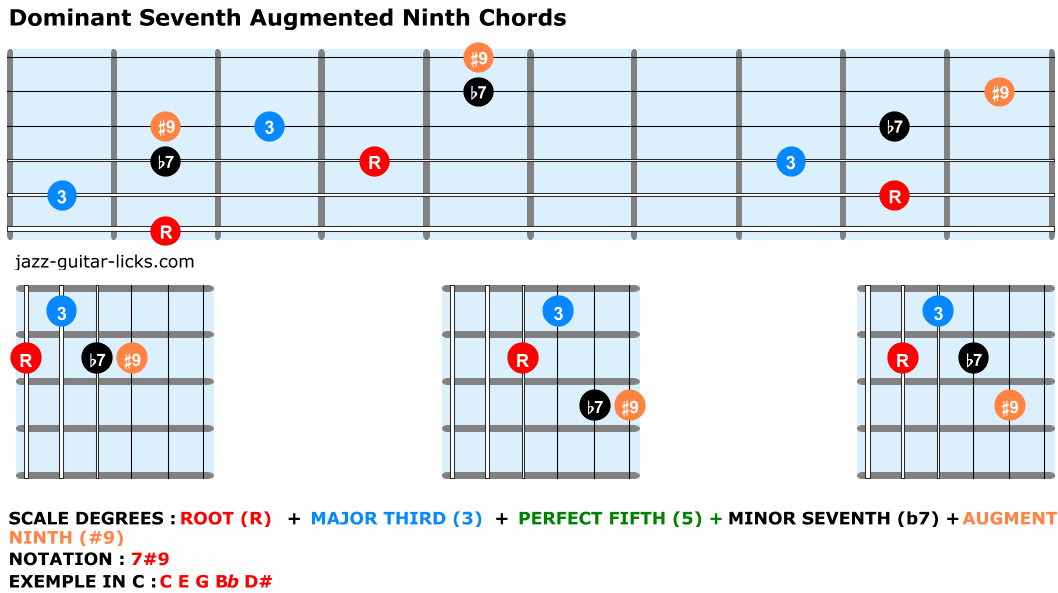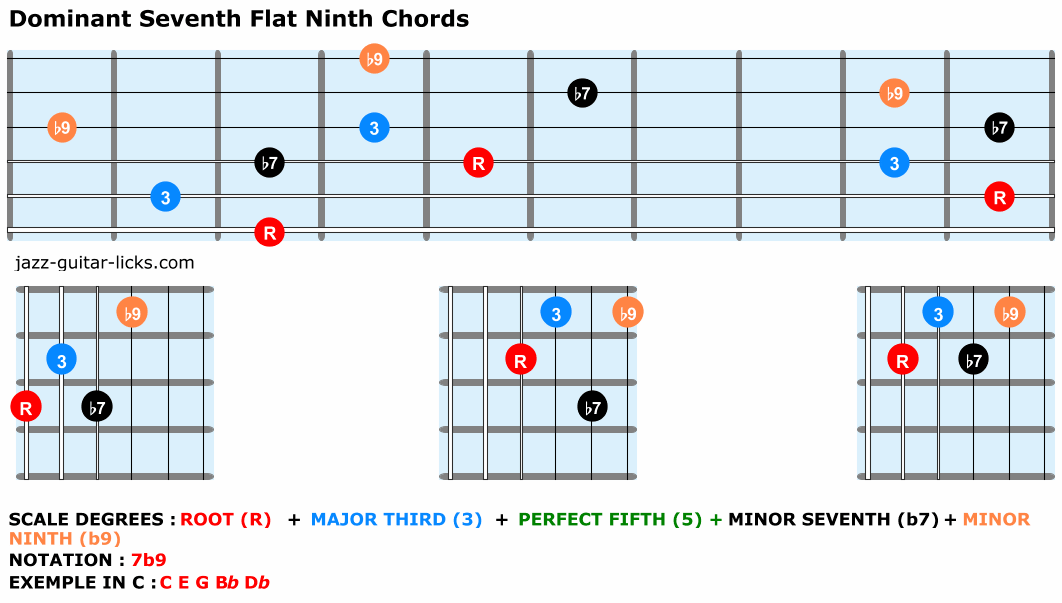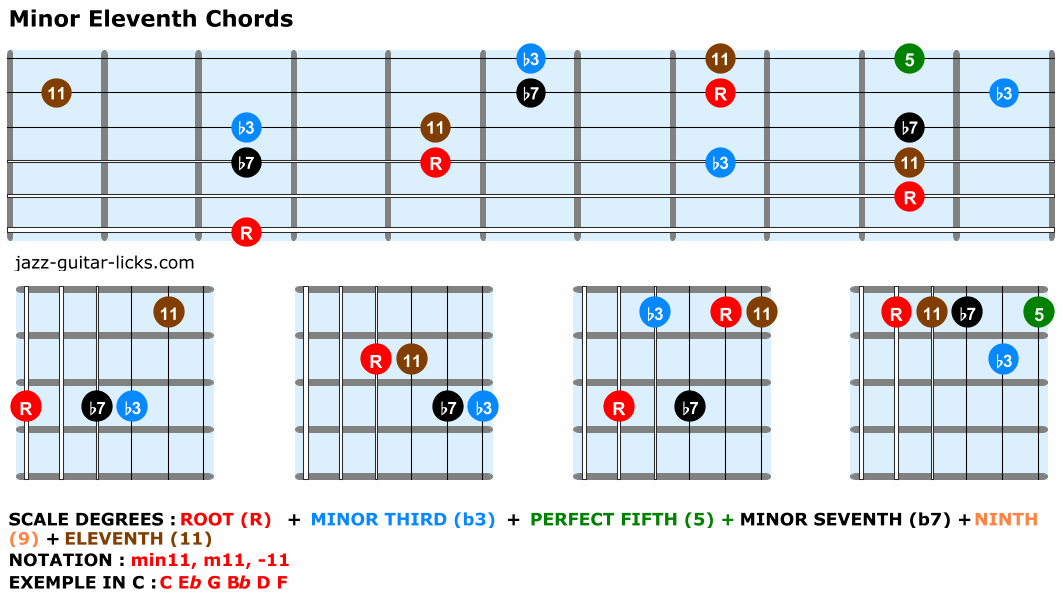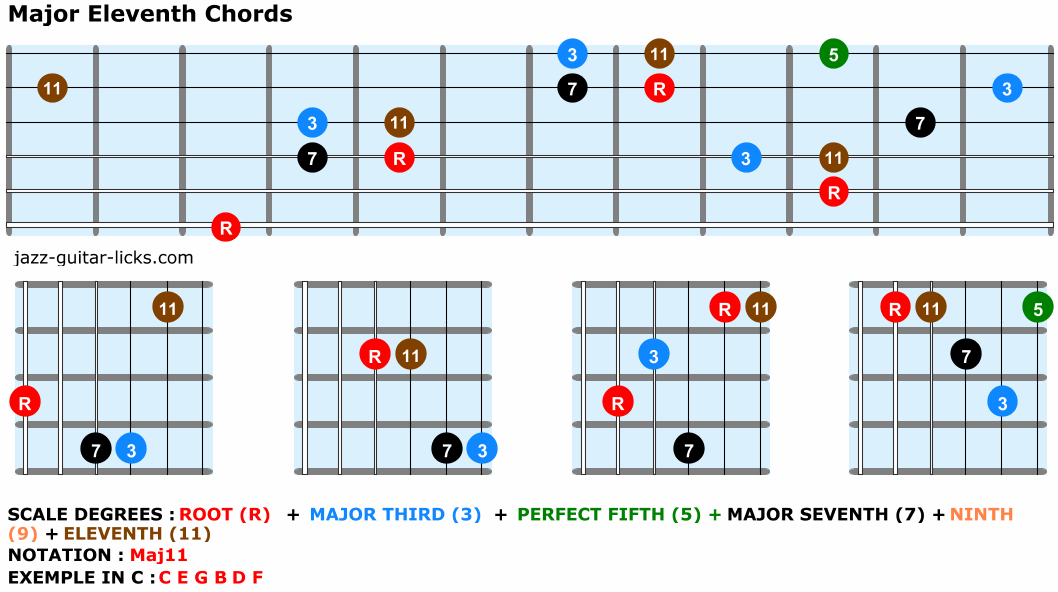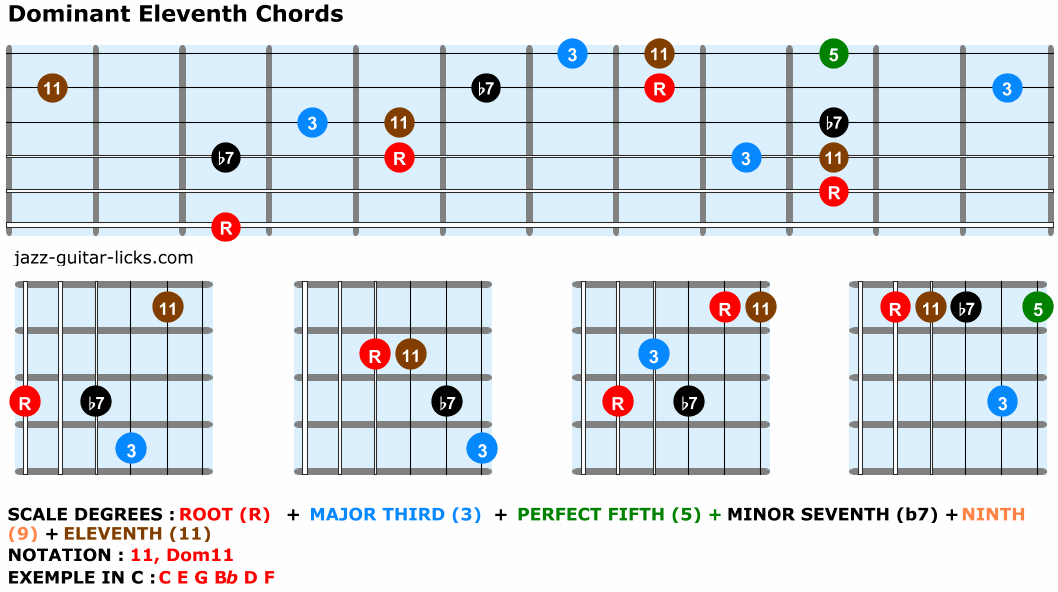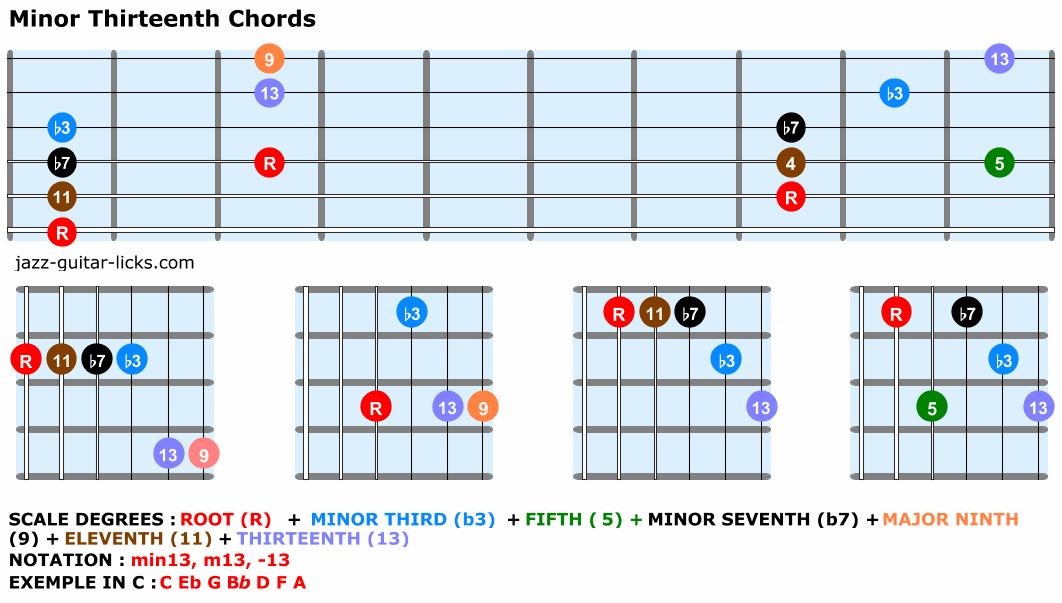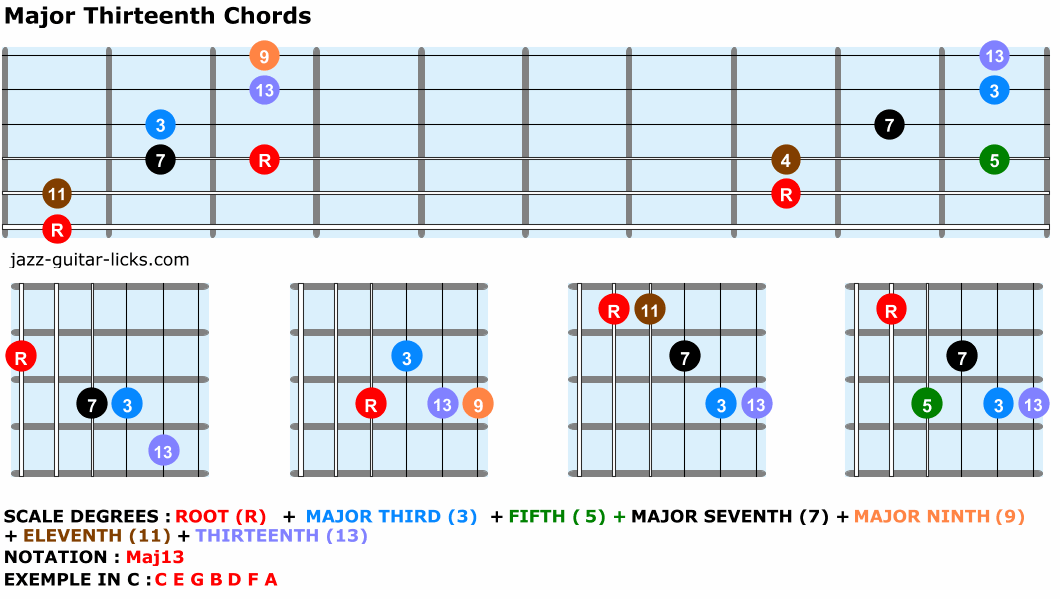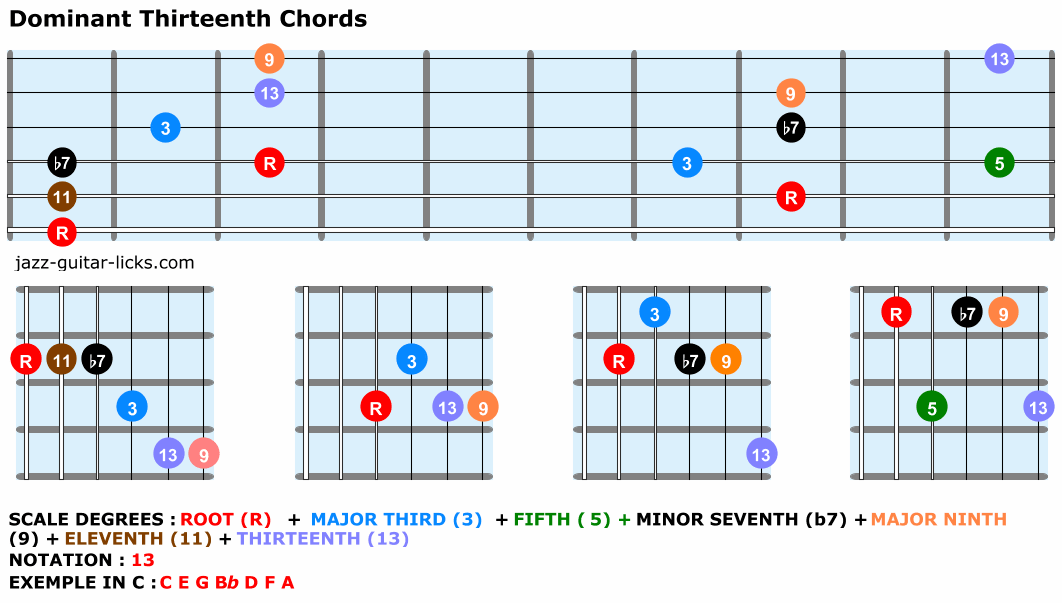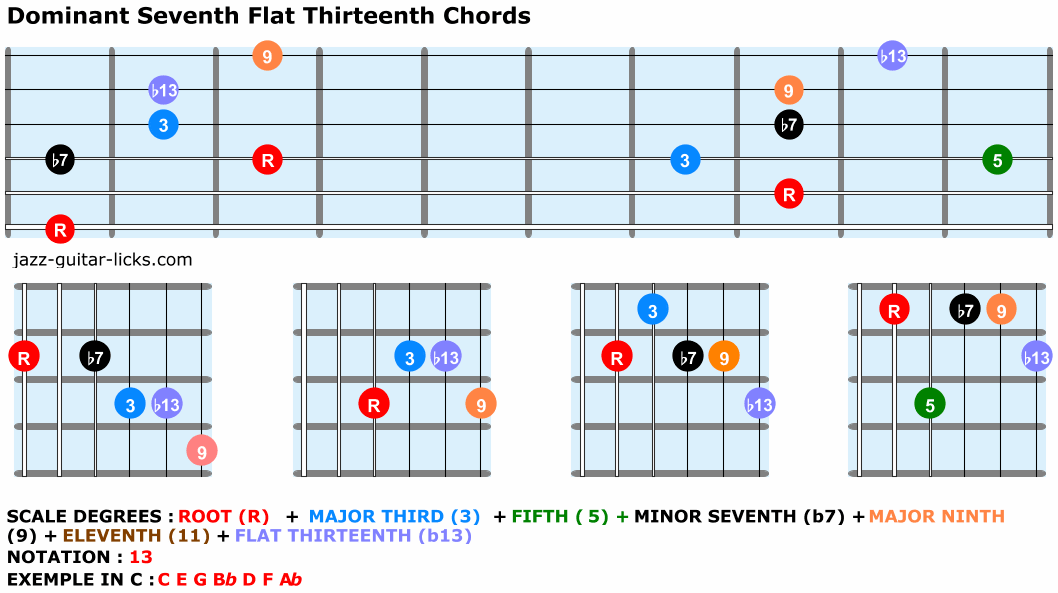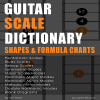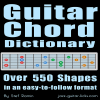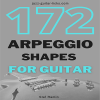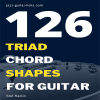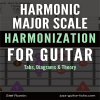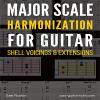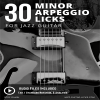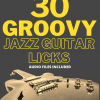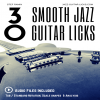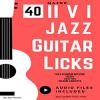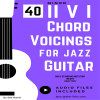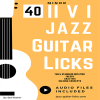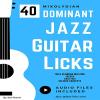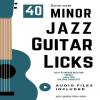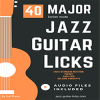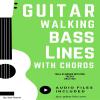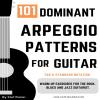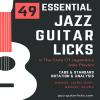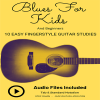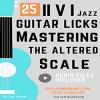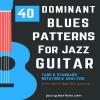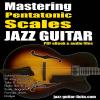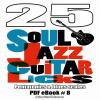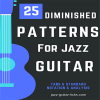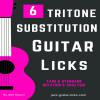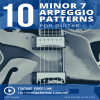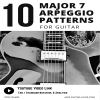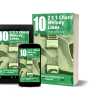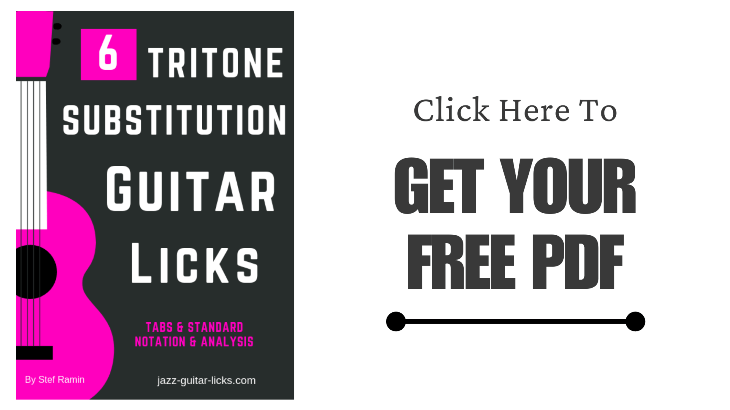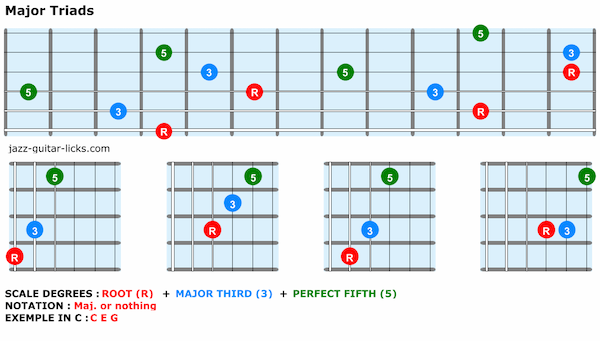
Guitar Chord Construction - Theory And Basic Shapes - Essential Guide
- By jazz-guitar-licks
- On 2020-01-18
- In Jazz Guitar Lessons
- 6 comments
This lesson explains how jazz guitar chords are built and how to play them using common positions.
This will help you understand, identify, build and play one of the most important types of chords.
All the shapes proposed in this tutorial are movable and playable anywhere on the fretboard.
To simplify learning, the voicings used in this course ensure that the root is always the lowest note, either on the sixth, fifth or fourth string.
In other words, there are no chords with third, fifth, seventh or any other note in the bass.
Don't hesitate to create your own chord positions.
In the meantime, take a look at the following essential chord shapes proposed below, classified into four distinct categories :
- TRIADS
- (major, minor, augmented, diminished, sus4 and sus2).
- SEVENTH CHORDS (aka tetrads)
- (maj7, min7, dom7, m7b5, dim7, minMaj7, maj7#5, 7b5, 7#5).
- SIXTH CHORDS
- (maj6, min6).
- EXTENDED CHORDS
- (min9, maj9, 9, 6/9, 7#9, 7b9, m11, maj11, 11, m13, maj13, 13, 7b13)
Triads
Triads are the most basic chords. As the name implies they contain only three notes. They are the backbone of many chords used in jazz and many other styles of music.
The most important are minor (min), major (maj), diminished (dim), augmented (aug) and suspended (2 and 4). Here are the most basic chord positions to play them on guitar.
Major Triads (maj)
Here are four basic major triad shapes with root in the bass to play on guitar. The formula is root (R), major third (3) and perfect fifth (5).
Minor Triads (min)
Minor triads are built with Root (R), minor third (b3) and perfect fifth (5). Here are four basic shapes.
To get more triad positions go on the page about open and close triad voicings shapes.
Seventh chords
Seventh Chords also called tetrads, contain four chord tones that are : Root, third (minor or major), fifth (perfect, augmented or diminished) and seventh (minor, major or diminished).
Here are the most important guitar chord shapes and basic voicings to play them.
Major Seventh Chords (Maj7)
Major seventh chords are made of a major triad with an added major seventh giving the formula : root (R), major third (3), perfect fifth (5) and major seventh (7).
You will find major seventh chords on the first (I) and fourth (IV) degree of the major scale.
Minor Seventh Chords (min7)
Minor seventh chords can be seen as minor triads with a supplementary note, the minor seventh (b7) thus giving the formula : Root (R), minor third (b3), perfect fifth (5) and minor seventh (b7).
Min7 chords are present in the harmonized major scale on the second (ii), third (iii) and sixth (vi) degree.
On the fourth degree (iv) of the harmonic minor scale. On the third degree (iii) of the harmonic major scale and on the second (ii) of the melodic minor scale.
Dominant Seventh Chords (7)
Like major seventh chords, dominant 7th are built based on major triads but with an additional minor seventh (b7).
The formula is Root (R), major third (3), perfect fifth (5) and minor seventh (b7).
It's a kind of mix between maj7 and min7 chords.
They can be found on the fifth degree (V) of the major scale, the harmonic major scale, the harmonic minor scale, and also on the degrees four (IV) and five (V) of the melodic minor scale.
Half-Diminished Chords (m7b5)
A half-diminished chord is a diminished triad with an extra minor seventh (b7).
The formula is Root (R), minor third (b3), diminished fifth (b5) and minor seventh (b7).
It is a minor seventh chord whose fifth has been lowered by a semitone.
You can find m7b5 chords on the seventh degree of the major scale, on the second degree of the harmonic minor scale, on the second degree of the harmonic major scale and on the sixth and seventh degrees of the melodic minor scale.
Diminished Seventh Chords (dim7)
A diminished 7 chord formula is Root (R), minor third (b3), diminished fifth (b5) and diminished seventh (bb7).
It's a diminished triad with a supplementary diminished fifth.
Dim7 chords can be foudn on the seventh mode of the harmonic minor and harmonic major scales.
Minor Major Seventh Chords (minMaj7)
The chord tones of a minMaj7 chord are Root (R), minor third (b3), perfect fifth (5) and major seventh (7).
This is a minor triad with a major seventh.
Minor major seventh chords are associated with the I chord of minor II V I progressions.
They have to be found on the first degree of the harmonic and melodic major scales.
Augmented Major Seventh Chords (Maj7#5)
Augmented major seventh chords are maj7 chords with an augmented fifth thus giving the following chord tone formula : Root (R), major third (3), augmented fifth (#5) and major seventh.
They are found on the harmonized third degree of the harmonic minor scale and on the seventh degree of the harmonic major scale.
Dominant Seventh Flat Fifth (7b5)
As its name implies, a dominant 7 flat 5 chord is a dominant chord with a lowered fifth.
Scale degrees are : Root (R), major third (3), diminished fifth (b5) and minor seventh (b7).
It is considered as being a diminished triad with a minor seventh.
7b5 are related to 7#11 chords because they have notes in common so the positions on guitar are very similare.
But, in theory they are built differently, dom7#11 chords are made of six chord tones (1, 3, 5, b7, 9, #11) in comparison with 7b5 chords that are made of only four notes (1, 3, b5, b7).
Dominant Seventh Sharp Fifth (7#5)
7#5 chords are dominant chords with an augmented fifth, in other words, they are augmented triads with a b7.
The chord tone pattern is Root (R), major third (3), augmented fifth (#5) and minor seventh (b7).
Dom7#5 guitar chord shapes are very similar to 7b13 because they share four chord tones that are 1, b3, #5 (same as b13) and b7.
Sixth Chords
Sixth Chords
A sixth chord (also called added sixth chord) is a triad with a supplementary sixth.
It can be minor 6 or major 6, here are the main common guitar positions.
Major Sixth Chords (6)
Major sixth chords formula is Root (1), major third (3), perfect fifth (5) and major sixth (6).
This is a major triad with a sixth.
They can be used as substitutions for major seventh chords (depending on the musical context).
Here are four positions to play them on guitar.
Extended Chords
Extended Chords
Extended chords are chords with notes above the octave as the ninth (9), eleventh (11) and thirteenth (13).
The main extended chords are min9, 9, maj9, 11, min11, 13 and min13.
Here are some usual guitar shapes.
Minor Ninth Chords (m9)
Theoretically m9 chords are made of fifth notes that are Root (1), minor third (b3), perfect fifth (5), minor seventh (b7) and ninth (9).
These are actually minor seventh chords extended with a major ninth.
Because it is physically difficult to play these five notes on guitar, the fifth can be ommited.
Minor 9 chords should not be confused with minadd13 chords that are simply minor triads with an added ninth.
Major Ninth Chords (Maj9)
Major ninth chords can be seen as major seventh chords plus a major ninth giving the chord tones : Root (1), major third (3), perfect fitth (5), major seventh (7) and ninth (9).
These are actually major seventh chords extended with a major ninth.
Here are four main guitar voicing shapes.
Dominant Ninth Chords (9)
Dom9 chords should not be confused with major ninth chords.
They contain a minor seventh (b7).
The chord tone formula is : Root (1), major third (3), perfect fitth (5), minor seventh (b7) and ninth (9).
Just as min9 and maj9 chords, the fifth is not played in the following guitar diagrams (except for last shape, free to you to play it).
Sixth Ninth Chords (6/9)
The name of the chord is explicit, 6/9 chords are sixht chords with an added ninth.
The formula is Root (R), major third (3), perfect fifth (5), sixth (6) and ninth (9).
As shown below in the chart, the fifth or the third can be leaved out in order to facilitate the fingering.
Dominant Seventh Augmented Ninth Chords (7#9)
There are two ways of altering the ninth of a dominant chord.
The first is to raise it with a semitone giving a dominant seventh chord with an added #9. The formula is : Root (1), major third (3), perfect fifth (5), minor seventh (b7), augmented ninth (#9).
Here are three basic 7#9 shapes to play on guitar. You can notice that the fifth is ommited in the first two shapes.
Minor Eleventh Chords (min11)
A minor 11 chord is a minor seventh chord extended with a ninth and an eleventh.
Theoretically the formula would be : Root (1), minor third (b3), perfect fifth (5), minor seventh (b7), major ninth (9) and eleventh (11).
As guitarists, it is difficult to play the sixth tones of an eleventh chord.
So some chord tones must be removed in order to simplify the fingering while keeping the most important tones that makes the sound of the eleventh chord.
As shown in the shapes below, the fifth and the ninth have been removed.
It means that the chords in the chart below can be renamed min7add11.
Major Eleventh Chords (Maj11)
Theoretically major 11 chords are major seventh chords with two added chord tones, the ninth and the eleventh giving the formula : Root (1), major third (3), perfect fifth (5), major seventh (7), major ninth (9) and eleventh (11).
In practice this is different, as the guitar diagrams proves it is necessary to leave out some chord tones that are generally the fifth and the ninth.
Dominant Eleventh Chords (11)
Dominant eleventh chords are dominant 7 chords with an added ninth and eleventh.
The theoretical formula is Root (1), major third (3), perfect fifth (5), minor seventh (b7), major ninth (9) and eleventh (11).
Once again it is very hard to play all the sixth tones of the chord on guitar. Some notes must be omitted as shown in the shapes below.
-
Guitar Scale Dictionary
This E-book is a printable PDF method including over 700 scale diagrams and formula charts for guitarists. -
Guitar Chord Dictionary
This PDF eBook provides over 550 guitar chord shapes. This is the perfect reference guide to understand how chords are built and how to play them on the guitar neck. -
172 Arpeggio Shapes For Guitar
This printable PDF is a method dedicated to guitarists of all styles who want to learn build and play the most important types of arpeggios. -
126 Triad Chord Shapes
This handbook for guitar players is intended both for teachers and students. It includes 126 guitar shapes for mastering triads. -
Harmonic Major Scale Chords
this PDF offers diagrams and tabs for guitar to learn the chords of the harmonic major scale. -
Major Scale Harmonization
This package provides a printable PDF with exercises and audio files to learn how to harmonize the major scale with 3 note chords and their extensions. -
30 Minor Arpeggio Licks
This package includes a printable PDF method containing 30 exercises with tabs, staves and audio files for practicing minor arpeggios on guitar. -
II V I Bundle - 170 Exercises
This bundle contains 4 PDF methods for a total of 170 exercises with tabs, staves, analysis & audio files for practicing scales, arpeggios licks & chords over the 2-5-1 progression. -
Diatonic Licks Bundle
This package contains 120 jazz guitar lines based on diatonic modes as Mixolydian, Dorian and Ionian. PDF format with tabs, audio files and analysis. -
30 Groovy Jazz Guitar Licks
This downloadable package contains a PDF WITH audio files giving access to 30 groovy guitar phrases mixing jazz, blues and funky licks for beginners. -
30 Smooth Jazz Guitar Licks
In this package you'll get a printable PDF Method with tabs, notation, analysis, scale shapes and audio files for practicing 30 smooth jazz guitar licks. -
40 II V I Jazz Guitar Licks
This pdf method for guitar contains fourteen 2 5 1 jazz guitar lines with tab, standard notation, analysis, scale charts and audio files. -
50 II-V-I voicings
This printable PDF guitar method provides 50 exercises with audio files, analysis, tab and staves for learning major 2-5-1 chord voicings. -
40 Minor 2 5 1 Chord Voicings
This PDF method contains 40 exercices with tabs, scores and audio files for practicing jazz guitar chords over the minor 2 5 1 progression. -
40 Minor II V I Licks
This guitar method is a printable PDF with tabs, diagrams, theory and audio files providing 40 minor 2 5 1 jazz patterns. -
40 Mixolydian Jazz Guitar Lick
PDF guitar method with tabs, audio files and theory providing 40 dominant jazz guitar lines for teachers and students. -
40 Minor Jazz Guitar Licks
This printable guitar method in PDF format contains 40 easy minor jazz guitar lines based on the Dorian mode. -
40 Major Jazz Guitar Licks
Printable PDF eBook method containing 40 major jazz guitar licks with tab, standard notation and audio files for beginners and intermediates. -
Guitar Walking Bass Lines
This jazz guitar method about walking bass lines and chords is available as a PDF files containing 35 exercises with tabs, analysis and audio files -
101 Dominant Arpeggio Patterns
This printable PDF method provides 101 dominant arpeggio exercises with tab, theory and standard notation for the jazz, blues and rock guitarist. -
49 Essential Jazz Lines
This printable eBook method in PDF format provides 49 jazz solo transcriptions of the greatest jazz musicians. Tab, standard notation, audio files & analysis. -
11 Jazz Blues Studies
11 jazz blues chord studies with tabs, standard notation, analysis, and audio recordings and PDF. -
10 Easy Fingerstyle Blues
This PDF with Tabs and audio files provides 10 easy acoustic fingerstyle blues guitar studies for kids and beginners. -
25 Altered Jazz Guitar Lines
This PDF eBook method contains 25 altered jazz guitar licks with tabs, patterns, scale charts and audio files to master, apply and develop the altered scale. -
40 Blues Dominant Patterns
This printable method is available as a PDF file containing 40 easy dominant jazz-blues guitar lines with tabs, standard notation, analysis, audio files and scale charts. -
25 Pentatonic Licks
This jazz guitar method is an eBook available as a PDF with standard notation, guitar tabs, diagrams, analysis, audio files and backing tracks. You will find in this booklet 25 easy jazz guitar lines with theory using common and rare pentatonic scales. -
25 Soul Jazz Guitar Licks
You will find here an eBook available in PDF containing 25 soul jazz and hard bop guitar licks in the style of Grant Green, Melvin Sparks, George Benson. -
25 Diminished Patterns
This eBook PDF with audio files contains 25 dominant diminished jazz guitar patterns using the half-whole diminished scale and diminished 7th arpeggios. -
6 Tritone substitution licks
This Printable PDF eBook available for free download contains 6 easy jazz guitar licks with tabs/notation, youtube video link and analysis about the tritone substitution. -
10 Minor 7 Arpeggio Patterns
This printable PDF eBook offers 10 easy minor 7 arpeggio patterns with its related YouTube video for beginner guitarists. -
10 Easy Major 7 Arpeggio Licks
This is a printable PDF for beginner jazz guitar players providing 10 easy licks to practice major 7 arpeggios. -
10 Chord Melody Lines
Within this package, you'll discover a set of ten chord melody exercises for beginners. Printable PDFaudio files, a backing track, and a link to the associated YouTube video. -
10 Minor Blues Scale Licks
You'll find here a PDF with 10 easy jazz guitar licks to practice the minor blues scale on guitar.
chord guide chords jazz guitar chord bible jazz guitar chord dictionary fretboard mastery guitar chord chart chord list
Comments
-

- 1. Beginner Guitar Lessons On 2021-01-25
It is a wonderful article stating the chord construction, which can be the best option as per your need. I like how you have researched and presented these exact points so clearly.-
- jazz-guitar-licksOn 2021-01-25
Thanks
-

- 2. Beginner Drum Lessons On 2020-11-21
Over this article you will get to know about the chord construction . I really appreciate that you have provided the data too, really appreciative and useful blog for us. You have done a great research for I feel, thanks for sharing. Looking for more!!-
- jazz-guitar-licksOn 2020-11-21
Thanks for your comment
-

- 3. Guitar Lessons El Dorado Hills On 2020-02-03
That's really informative post. I appreciate your skills. Thanks for sharing.-
- jazz-guitar-licksOn 2020-02-03
Thanks
Add a comment
